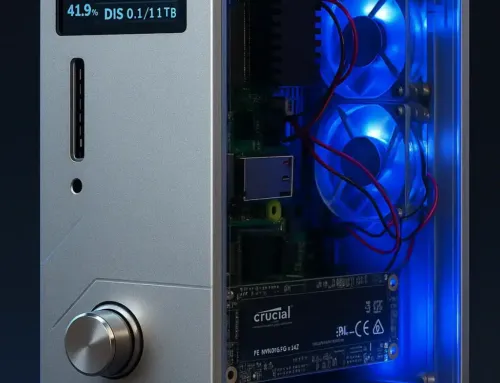
Approx. read time: 4.3 min.
Post: SHMT Tech: Doubling Speeds, Halving Power in Computing
Revolutionizing Computing: Simultaneous and Heterogeneous Multithreading (SHMT) Doubles Speeds, Halves Power Use. A new advancement in multi-threading technology, known as “Simultaneous and Heterogeneous Multithreading” (SHMT), has been developed by researchers at the University of California Riverside, offering a significant leap in processing capabilities. This innovative technique not only promises to double processing speeds but also cuts power consumption by 51% compared to current methods. SHMT extends beyond traditional simultaneous multithreading by integrating CPU, GPU, and AI processors to work in tandem on different tasks, leveraging each processor’s unique strengths. This approach contrasts with conventional computing models, where each component operates in isolation, often causing data transfer bottlenecks.
SHMT utilizes a sophisticated “smart quality-aware work-stealing (QAWS) scheduler” to dynamically allocate the diverse workload among the components. This scheduler enhances efficiency by distributing tasks based on precision requirements and the capability to reallocate tasks in real-time, ensuring optimal performance.
In practical tests, SHMT demonstrated a 95% increase in performance and a 51% reduction in energy consumption, achieving a fourfold boost in efficiency. The technology was tested on Nvidia’s Jetson Nano board, which, despite not being the latest in hardware, reflects common system configurations. However, the technology’s broader adoption hinges on overcoming certain challenges, notably the need for programmers to adapt algorithms to fully exploit SHMT’s parallel processing capabilities.
The transition to SHMT is not straightforward, requiring significant investment in developer tools and education, similar to Apple’s efforts in migrating Macs from Intel to Arm-based chips. The technology’s benefits also vary with the size of the problem being addressed, with larger tasks showing more substantial improvements than smaller ones.
While questions remain about SHMT’s real-world application, hardware compatibility, and optimal use cases, the potential impact is vast. This could range from reducing data center costs and environmental footprint to minimizing freshwater use for cooling, especially crucial given the growing demand for processing power in the era of generative AI applications.
Revolutionizing Computing: Simultaneous and Heterogeneous Multithreading (SHMT) Doubles Speeds, Halves Power Use
The paper titled “Simultaneous and Heterogeneous Multithreading” by Kuan-Chieh Hsu and Hung-Wei Tseng presents a novel programming and execution model that aims to leverage the full potential of heterogeneous computing resources within modern computers. This model, referred to as Simultaneous and Heterogeneous Multithreading (SHMT), is designed to enable parallel processing using different types of processing units concurrently for the same code region, in contrast to traditional models that focus on utilizing only the most efficient processing unit for each code segment. This approach seeks to address the underutilization of processing power within heterogeneous computing environments, where a variety of processing units and hardware accelerators, such as GPUs, TPUs, and DSPs, coexist.
The paper highlights the integration of diverse hardware accelerators in modern computing devices, ranging from mobile phones to data center servers, and notes the shift towards heterogeneous computing models facilitated by these components. Commercial examples of such accelerators include NVIDIA’s Tensor Cores and Ray Tracing Cores, Google Cloud’s TPUs, Apple’s Neural Engines, and Google Pixel Phones’ Edge TPUs.
SHMT not only proposes a method to concurrently use heterogeneous processing units but also introduces an abstraction and a runtime system to facilitate parallel execution. A significant challenge addressed by SHMT is the heterogeneity in data precision supported by various processing units, which is crucial to ensure the quality of results. The implementation and evaluation of SHMT were conducted on an embedded system platform featuring a GPU and an Edge TPU. The results demonstrated up to 1.95× speedup and 51.0% energy reduction compared to a GPU baseline, showcasing the potential of SHMT for enhancing performance and energy efficiency in heterogeneous computing environments.
The energy consumption analysis indicates that SHMT’s potential for energy savings is substantial, especially when computation is offloaded to a lower-power-consuming Edge TPU. This analysis was supported by measurements of energy consumption during the execution of SHMT, which showed a 51.0% reduction in energy consumption and a 78.0% reduction in energy-delay products (EDP) on average compared to a GPU baseline. Despite SHMT reaching higher peak power due to the simultaneous operation of both the GPU and Edge TPU, the significant reduction in energy usage is attributed to the 1.95× speedup, which shortens the duration of high power consumption.
Overall, SHMT represents a significant advancement in the utilization of heterogeneous computing resources, offering a model that not only improves computational efficiency and energy usage but also addresses the challenges associated with the diverse precision requirements of different processing units. This approach paves the way for more effective and efficient use of the myriad of computing resources available in modern computing platforms.
Related Posts:
The importance of Computing power development(Opens in a new browser tab)
China winning race to critical advanced technologies against U.S(Opens in a new browser tab)
Rabbit R1 AI device sales: 10,000 Units Sold and the Power of LAM(Opens in a new browser tab)








